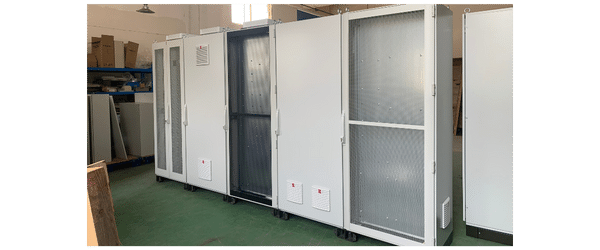The Role of Electrical Fiberglass Boxes in Modernizing Electrical Infrastructure
6/9/20244 min read


Electrical fiberglass boxes are essential components in the realm of modern electrical infrastructure. These enclosures, primarily composed of fiberglass-reinforced plastic, serve as protective housings for various electrical components. The composition of these boxes involves a combination of glass fibers and resin, which results in a robust, lightweight, and corrosion-resistant material. This unique blend of properties makes fiberglass an optimal choice over traditional materials like metal or plastic.
One of the primary reasons for choosing fiberglass over metal lies in its inherent resistance to corrosion. Metals, particularly when exposed to harsh environmental conditions, tend to rust and degrade over time. Fiberglass, on the other hand, remains unaffected by moisture, chemicals, and extreme temperatures, ensuring a longer lifespan and reduced maintenance needs. Additionally, fiberglass is non-conductive, which provides an extra layer of safety by minimizing the risk of electrical shocks and short circuits.
Compared to plastic, fiberglass offers superior durability and strength. While plastic may be suitable for light-duty applications, it often falls short in high-stress environments. Fiberglass boxes can withstand significant mechanical impacts, making them ideal for both indoor and outdoor installations. Furthermore, advancements in manufacturing techniques have enabled the production of fiberglass boxes that are not only strong but also aesthetically pleasing, blending seamlessly into various settings.
The fundamental role of electrical fiberglass boxes in electrical systems is to safeguard electrical connections, circuitry, and devices from external hazards such as dust, moisture, and mechanical damage. By providing a secure enclosure, these boxes ensure the integrity and reliability of electrical installations. Over time, the evolution of electrical enclosures has seen a gradual shift from traditional materials to fiberglass, driven by the need for more resilient and versatile solutions.
In modern applications, the adoption of fiberglass boxes marks a significant advancement in electrical infrastructure. Their superior protective qualities, combined with ease of installation and reduced maintenance requirements, underscore their importance in contemporary electrical systems. As technology continues to evolve, fiberglass boxes are poised to play an even more critical role in ensuring safe and efficient electrical operations.
Advantages of Using Fiberglass Boxes in Electrical Infrastructure
Electrical fiberglass boxes have emerged as an integral component in modernizing electrical infrastructure, offering numerous advantages that make them a preferred choice over traditional metal boxes. One of the primary benefits of fiberglass boxes is their exceptional durability. Unlike metal boxes, which are prone to rust and degradation over time, fiberglass boxes exhibit high resistance to corrosion. This attribute significantly extends their lifespan, especially in harsh environmental conditions.
Another noteworthy advantage is the non-conductive nature of fiberglass. This property enhances safety by reducing the risk of electrical shock, making fiberglass boxes a safer option for both residential and industrial applications. Additionally, fiberglass boxes are impervious to UV rays, moisture, and temperature fluctuations. This makes them particularly suitable for outdoor installations where exposure to the elements is a concern. They maintain their structural integrity and performance even in extreme weather conditions, ensuring reliable protection for the electrical components housed within.
Fiberglass boxes are also known for being lightweight yet robust. Their reduced weight compared to metal alternatives simplifies transportation and installation, which can lead to reduced labor costs and shorter installation times. Despite their lightness, they offer impressive strength, ensuring that they can withstand mechanical impacts and other external stresses without compromising the safety and functionality of the electrical systems they protect.
Data from recent case studies reinforce these claims. For instance, a study conducted by the National Electrical Manufacturers Association (NEMA) found that fiberglass boxes installed in coastal areas exhibited no signs of corrosion or degradation after five years, in contrast to metal boxes that required replacement or maintenance within the same period. Another case study highlighted a significant reduction in installation time and costs when transitioning from metal to fiberglass boxes in a large-scale industrial project.
Overall, the adoption of fiberglass boxes in electrical infrastructure not only enhances safety and reliability but also contributes to better performance under diverse environmental conditions. Their combination of durability, non-conductive properties, and ease of installation makes them an optimal choice for modern electrical systems.
Impact on Modern Electrical Infrastructure and Future Trends
The integration of electrical fiberglass boxes into modern electrical infrastructure is pivotal in advancing the industry. Their usage is increasingly transforming various sectors, especially in renewable energy projects, smart grids, and other sophisticated electrical systems. Fiberglass boxes are favored due to their non-corrosive nature, which makes them exceptionally durable in harsh environments. This characteristic is particularly beneficial in renewable energy projects such as solar and wind farms, where exposure to the elements is a constant challenge.
In smart grid technology, the need for reliable and resilient electrical enclosures is paramount. Electrical fiberglass boxes provide an excellent solution due to their high strength-to-weight ratio, allowing for easier installation and reduced maintenance costs. The ability of fiberglass to resist electromagnetic interference (EMI) is also crucial in maintaining the integrity of sophisticated data and communications systems integral to smart grids. This ensures that these grids can operate smoothly, enhancing the efficiency and reliability of the electrical supply.
The environmental benefits of utilizing fiberglass boxes are significant. Their longer lifespan compared to traditional materials like metal means fewer replacements and less waste. Moreover, the reduced need for maintenance minimizes the environmental impact associated with frequent servicing and part replacements. This contributes to the overall sustainability of electrical infrastructure projects, aligning with global efforts to reduce carbon footprints and promote eco-friendly practices.
Looking ahead, the future of electrical enclosures is poised for exciting advancements. Innovations in fiberglass materials, such as the development of even more robust and lightweight composites, could further enhance the performance and application range of these boxes. Additionally, advancements in design, including improved thermal management and integration with smart sensors, could revolutionize their role in modernizing electrical infrastructure. As technology progresses, electrical fiberglass boxes are expected to evolve, continually supporting the efficiency, reliability, and sustainability of future electrical systems.
